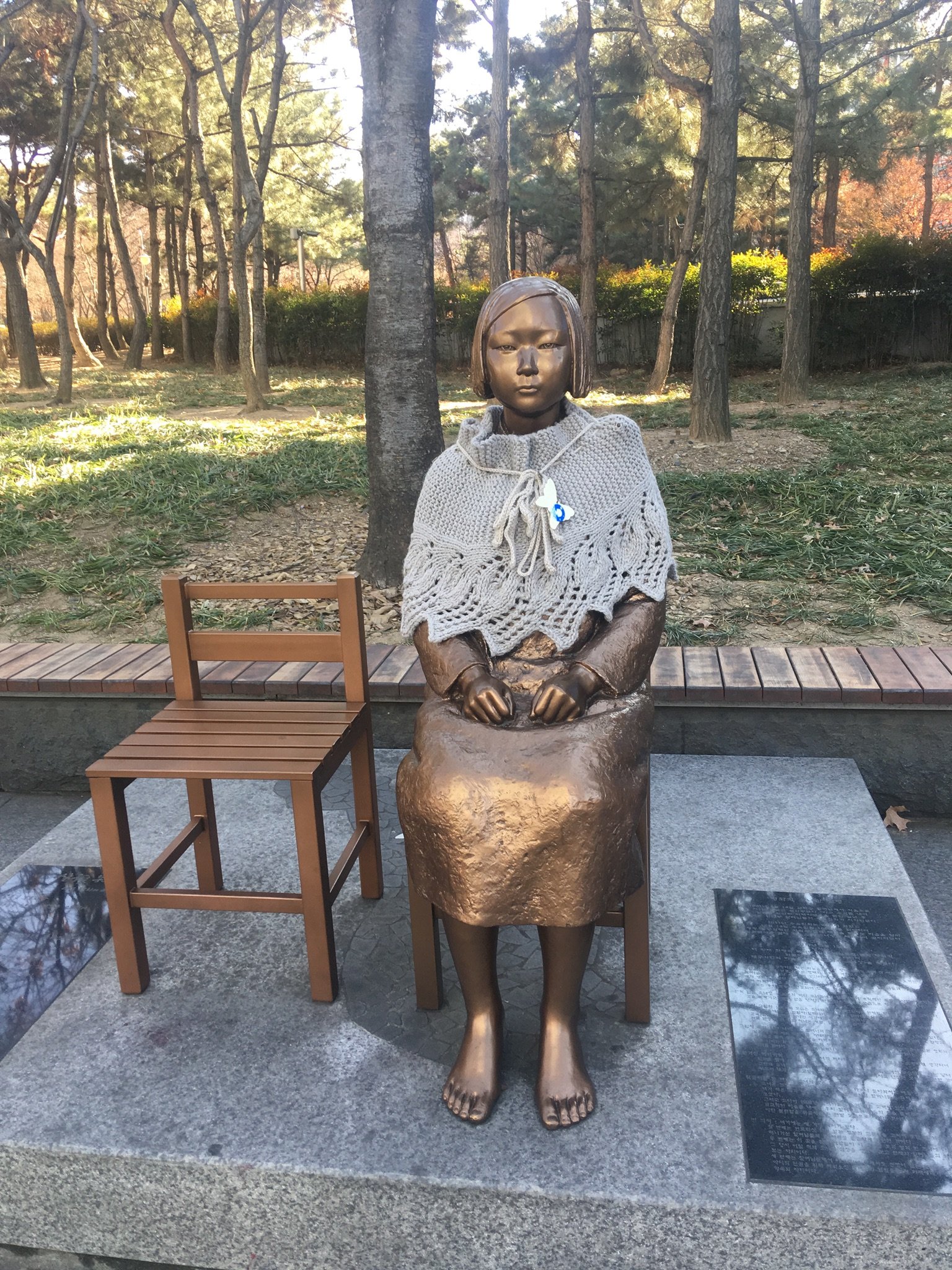After my visit to the House of Sharing I requested permission from Halmoni Kang-Il Chul to paint her portrait, which she gave generously. Over lock down I emailed a copy of the final painting to the House of Sharing who printed out a copy and gave it to her.
She was apparently very pleased with it! I hoped to one day give her the real thing in person but unfortunately due to COVID the walls of the world locked down, and then so did the House of Sharing.
I spent the next couple of years waiting impatiently for Korea to welcome me back in. In 2022 after filling in a hell of a lot of paper work I arrived at Incheon airport and got the KTX to Dageu, where I had first come across the peace statue all those years ago, ready for the next stage of Halmoni.
There I met with an activist, who ran a museum in Dageu called Heeum museum. A lovely little museum tucked away just outside the city which does much to support the remaining survivors in the area, while also raising public awareness of the issue. It was there that I had the absolute honour and privilege of meeting Halmoni Lee Yong-soo. The youngest of all the survivors, who at the tender age of 97 is a force to be reckoned with.
Me and Halmoni Lee Yong-soo at Heeum Museum, 2022
Halmoni Lee sat for a portrait for me dressed in a stunning pink and purple Han Bok (tradtional Korean dress). Halmoni Lee has travelled the world advocating for the cause, wanting for nothing more than a genuine apology from the Japanese government. Justice is her life’s work.
Halmoni Lee sitting for her portrait, 2022
For around four hours she sat as I created my preliminary sketches, to be worked upon in the art studio later. ‘Thank you’ she told me, ‘I can’t believe you have travelled all this way just to paint my portrait.’ But really I should have been the one to say thank you. That this woman who had overcome so much was willing to sit with me, and to share with me her story. There I was awestruck by her radiance, her vulnerability and her power.
A week later I was taken to meet Grandma Parc, the other survivor who lives in Daegu. A generous, hospitable and well-humoured lady. Grandma Parc, didn’t tell me her story, not in any verbal form. But I was reminded, while in the sanctity of her home, that sometimes the greatest narratives don’t have words-that’s what art is for.
One things for sure though, I came out of those interactions changed and inspired.




